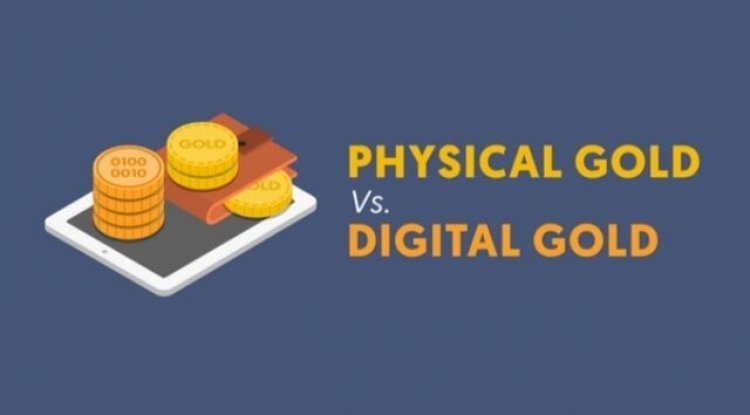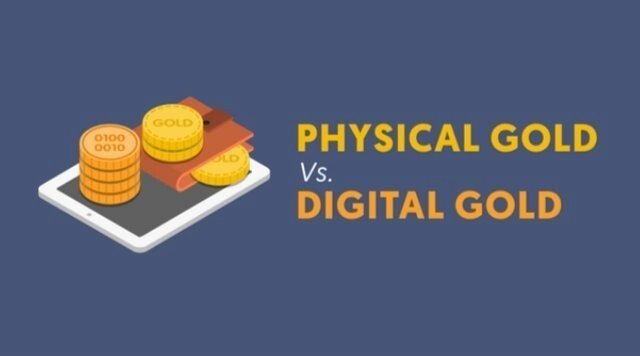What moves the Gold price and Why Gold backed lenders in India give out over-collateralized Loan?
It is said that gold is an Inflation hedge. But if you look at the historical data points, Gold has not really been able to live up to the expectations, lets check, What really moves gold prices? and What is a real rate of return? and what is the relationship between gold prices and real rate of return. and more such facts. .
What moves the Gold price?
It is said that gold is an Inflation hedge. But if you look at the historical data points, Gold has not really been able to live upto the expectations, lets check..
(Q1) What really moves gold prices?
It’s not just inflation but a combination of Inflation & Interest Rates that moves Gold prices. Real Rate of Return like we call it moves the gold prices.
(Q2) What is a real rate of return?
Real Rate of Return in simple language is, Interest Rate – Inflation.
- If bank FD is paying you 5% & inflation is 6%, your real return is 5% - 6% = -1%
- If inflation is 3%, your real return is 5% - 3% = 2%
(Q3) What’s the relationship between real rates & gold prices?
(a) Negative Real Rates (-1% in the above example) is supportive of gold prices
(b) Positive Real Rates (2% in the above example) works against gold prices
(Q4) Why?
(a) Gold is a non interest-baring instrument i.e. does not pay any fixed interest
(b) Hence, whenever rates drop, you make less fixed interest by investing incremental money in fixed income & hence it moves to Gold & When rates go up, you want to invest incremental money in Fixed income & not gold
(c) Hence, assuming inflation to be constant, you will invest more in Gold when Interest is 4% & inflation is 6% = -2% real rate and you will invest less in Gold when interest rate is 7% & inflation is 6% = 1% real rate
(Q5) Apart from Interest Rate & Inflation, what else can affect gold price?
(a) Hedge to volatile equity markets - Typically when equity markets are volatile, investments shift from Equity to Gold temporarily for stability
(b) $ - Gold is traded in $. When $ increases, gold becomes expensive & hence demand is expected to fall & hence the price comes down & vice versa
(Q6) In 2021, Gold in $ terms was down 4.3% but in rupee terms was down 2.6%, why?
-Assuming 1 ounce of gold is $1,
(a) When $1 is 70 rupees, the landing price of Gold in India is 70
(b) But when $1 is 75 rupees, the landing price of Gold in India is 75
So when 1 ounce is 1$ & 1$ is 70, your landed cost of gold is 70. Assuming gold does not move in $ terms & is still 1 ounce for 1$ but if rupee depreciated from 70 to 75, in rupee terms, gold has appreciated by 5/70 = 7%. Rupee depreciation works well for Gold prices domestically.
(Q7) What’s happening to Gold right now?
(a) Working in favor of Gold
- High inflation
- Negative real rates
- Volatility in Equity markets
- Central banks globally are adding to their gold reserves
(b) Not working for Gold
- $ Strengthening
- Rates expected to go up
(Q8) Wouldn’t rising rates bring Gold down? It almost hit $1850, Y?
(a) Rates are expected to go up but ‘may be’ the market believes, inflation won’t come down so easily (negative real rates will persist). Crude at $90 is a huge inflation concern & hence the rally in Gold
(b) Very lately, the DXY (Dollar Index) broke over 97 & we saw gold give away some gains.
Not sure which side will win but for gold rally to continue, DXY needs to fall first below 97 & lower there after..
Gold backed lenders in India give out over-collateralized loans at 20%+ yields!
So here's a thread explaining how the business works..
Although India's love for gold is well known - it helps to add some numbers to put things in context. Based on Niti Aayog estimates - 24,000,000 kgs of gold lies unused in Indian households and religious institutions.

For Indians - gold isn't just a financial asset, it is an emotional one. Gifted at weddings - passed on between generations - held as a family heirloom. The unique relationship Indians have with gold give it two critical properties -
(1) It makes it difficult to sell even during times of distress
(2) It makes for a much more potent collateral - since the value associated with it is not just financial.
India is also an incredibly credit starved nation. It may not look like it to folks who are used to getting a dozen 'personal loan' calls a week - but for a huge majority of Indians - especially rural bottom of pyramid users - access to credit is still a challenge.
This gap was historically bridged by village level unorganized lenders - who charged usurious rates to provide loans to local villagers. Infact - even today, the gold-backed lending business is largely unorganized at more than 65%+ of the market. But organized lenders are making inroads - and taking share.
Before we begin to understand the space - it helps to understand how a typical gold-lending transaction works.
Generally availed by bottom of pyramid and lower middle class users during times of financial distress or for a large one time spend, these loans are low ticket size, short term, and collateral backed.
Jargon buster - LTV (loan to value): Loan to value is nothing but the amount of loan an institution gives out against the value of a collateral. If you keep Rs 100 worth of gold as collateral and the bank agrees to give you a maximum of Rs 65, thats a 65% LTV. Keep in mind here, that the LTV is from the lender's perspective - on the gold weight and purity. For the borrower - the gold is generally dearer by atleast 15-20% financially (gst, making, etc)
This combined with the emotional value attached with gold in most cases makes it an extremely potent collateral. So from a risk perspective - you have a borrower who has a very strong emotional and financial incentive to not default - and even when they do default - you probably will not lose much (because you're materially overcollateralized). Understandably - as gold prices increaase - the risk for the lender goes down (more valuable collateral) and the reverse when it does up (less valuable collateral).
With a reasonably good understanding of how the business works - let us attempt to understand the key factors that a customer looks for in this business:
1. Trust: Customers trust the lender with a material part of their family wealth. Trust in the lender is therefore critical. Strong branding helps. Physical presence helps further.
A natural consequence of this is that once you've identified a lender who is trustworthy - there is high customer stickiness. Around 70% of sales for established businesses comes from repeat customers.
2. Turn-around time: Giving gold backed loans need a specialized skill set (appraiser, machinery, etc), not generally found in regular bank branches.
Specialized gold-backed lenders are able to service clients in less than an hour driven by their focussed operations, driving a critical advantage.
3. Proximity: Proximity aids both trust (which as we earlier discussed is critical to the business) as well as ease of execution. Having a strong branch network closer to the customer is therefore critical.
This brings us to one of the most important aspects of the gold lending business - efficiency. Setting up a branch is capital intensive. A natural extension of this is that firms that are able to sweat their branches well have an unbelievable advantage in the business.
Gold loans per branch is therefore a key metric for you to track and analyze - because the largely fixed cost base ensures that you can unlock material margin benefits if you're able to scale this metric well.
Historically - ticket size growth has been a critical driver of gold loan per branch growth aided by repeat customer usage & trust. The avg ticket size of the #1 gold-backed lender for eg is ~1.4x the #2, driving a material difference in branch efficiency.
4. Competitive rates: And last but not the least you need to have competitive rates. Now 20%+ rates might not appear competitive - but it is important to understand that they've persisted despite years of high public sector bank competition.
So why do these rates persist. There is a surface level answer and a true answer.
The first is that the ticket size and tenure on the loans are relatively small - which makes the absolute interest paid out relatively small.
The more relevant factor however is that the business is incredibly operation heavy - even for the 60K loan, you need a branch close by that you can to go to, an employee to process the loan .
Digital players are attempting to solve this via efficient logistics - down to the details like randomized pairing of collection agents to reduce fraud risk. The strategy however appears to avoid head on confrontation atleast for now. While specialized lenders are stronger in South and rural India - digital competitors are operating primarily out of North/West and Urban India. The likely strategy would be to perfect the operating model in less competitive markets and then move to the competitors home turf - but we'll tackle that when we get to it.
For now the market leader in the space seems pretty sorted - with a 5400+ branch network, 55000cr+ loan book, 13%+ spreads on loans, high teens loan book growth, and operating efficiency kicking in!
The business has been able to earn robust 12-14% on a very low risk loan book. It is also able to finance close to 8-10% of its book with cheaper short term commercial paper with prudent ALM given the tenure of the loans it gives out..
Did you know..

Purchasing physical gold can be quite challenging, so alternatives to it is to buy shares of gold mining companies, gold exchange-traded funds (ETFs) or future and option contracts..??
Numerous investors have gained industry exposure to precious metal, gold by buying stocks of companies involved in mining and exploration. As an investor, one should not ignore the key factors:
1) Gold production per quarter: Gold mining companies after extraction from the ores have to indulge in production of gold as a metal. Higher the volume of gold produced, more attractive the stock is expected to become as that might add to the company’s revenue.
2) Gold Recovery Rate: After gold is extracted at the gold grade through the plant, it has to be processed further to get refined, which is known as the recovery rate. Greater gold recovery rate would mean higher ounces of gold being processed, more saleable form.
3) Operating/Production Costs: For gold companies, operating costs are usually classified under:
i) Mining Cost: As the name suggests, Mining costs refer to all the costs related to excavating the ore such as fuel cost, mine equipment costs, explosive costs and fuel costs.
ii) Processing Cost: Cost associated to the plant where the ore is processed into gold like power and utilities, plant engineers, lease, water treatment, etc. fall under this category.
iii) General and administrative Expense: It comprises salaries, environmental costs, taxes, etc
4) Reserves and Resources: There are a few categories of reserves which convey the degree of certainty that mineral deposits exist and are mineable. More gold reserves would mean that the future revenues of the company are more secured as there lie untapped resources.
5) Average Realised Price: Realised prices refer to the final price at which the gold is sold by the companies to its customers, after deducting all the types of discounts from the list price.
6) Sales efficiency: On an average if a company has very low realised price, it mostly proves that the company is not efficient in selling its products at competitive prices.
7) Average ore grade: Grade refers to the metal content in an ore. A lower grade ore means incurring higher cost per unit weight of the metal extracted.Thus, if a company engages in production of lower grade gold ores, then it has to increase its costs due to heavier expenses.
8) Total cash costs per ounce of gold: Refers to the total cost incurred by a company in selling every ounce of gold sold, where total cost includes operational and mining costs. This helps to make investors understand the operational efficiency on per unit basis.
9) Sustaining cost: For a company to run its production, regular repair and maintenance of equipment becomes mandatory. Besides, there are several expenses which a company is bound to bear to sustain or continue its operations effectively and efficiently..






















